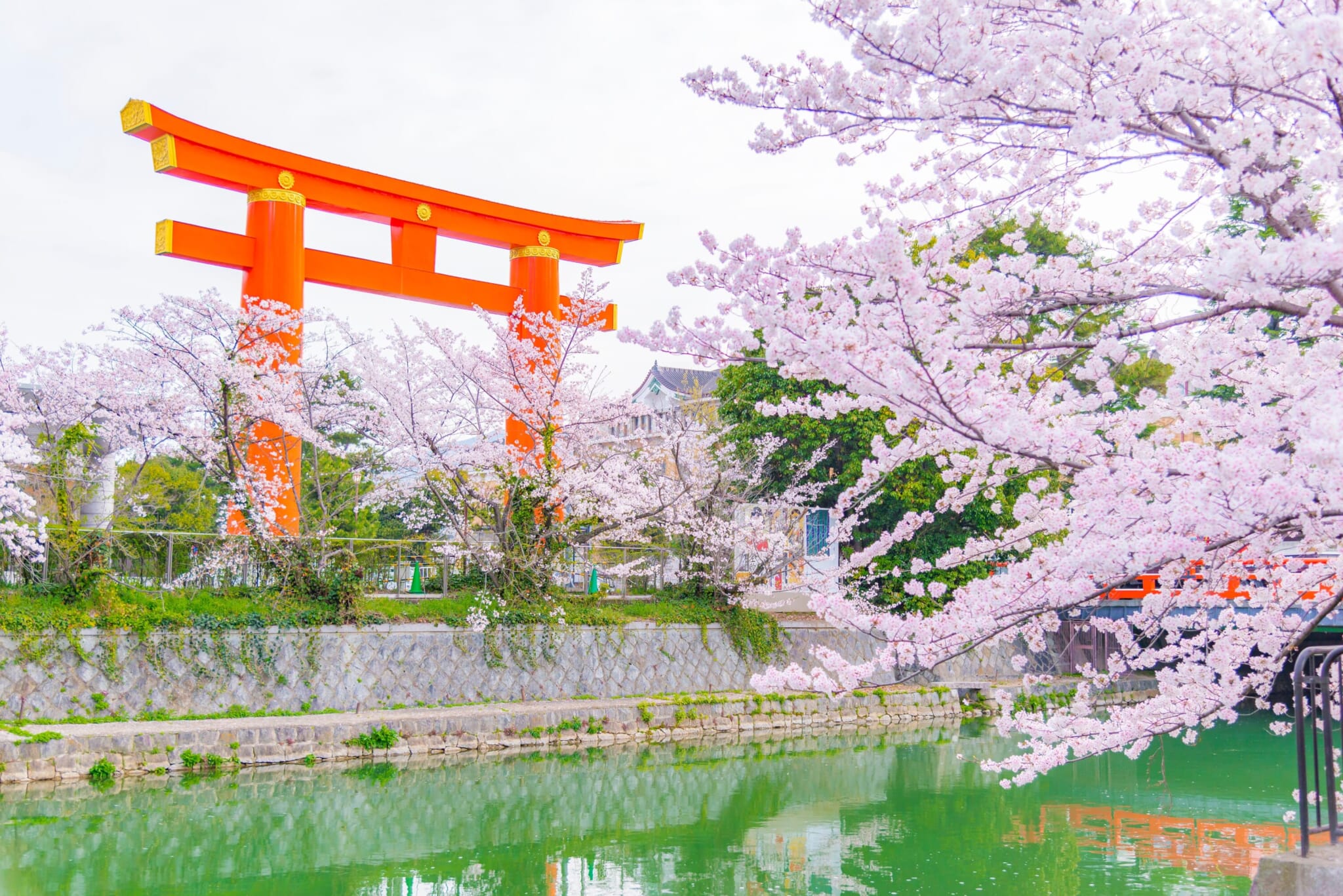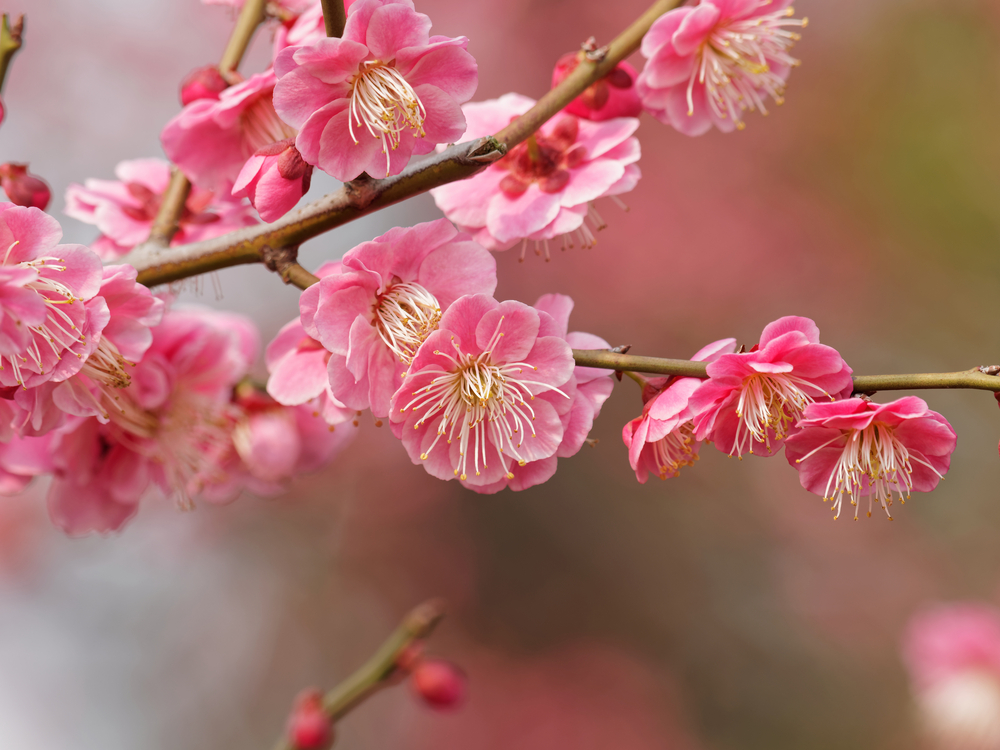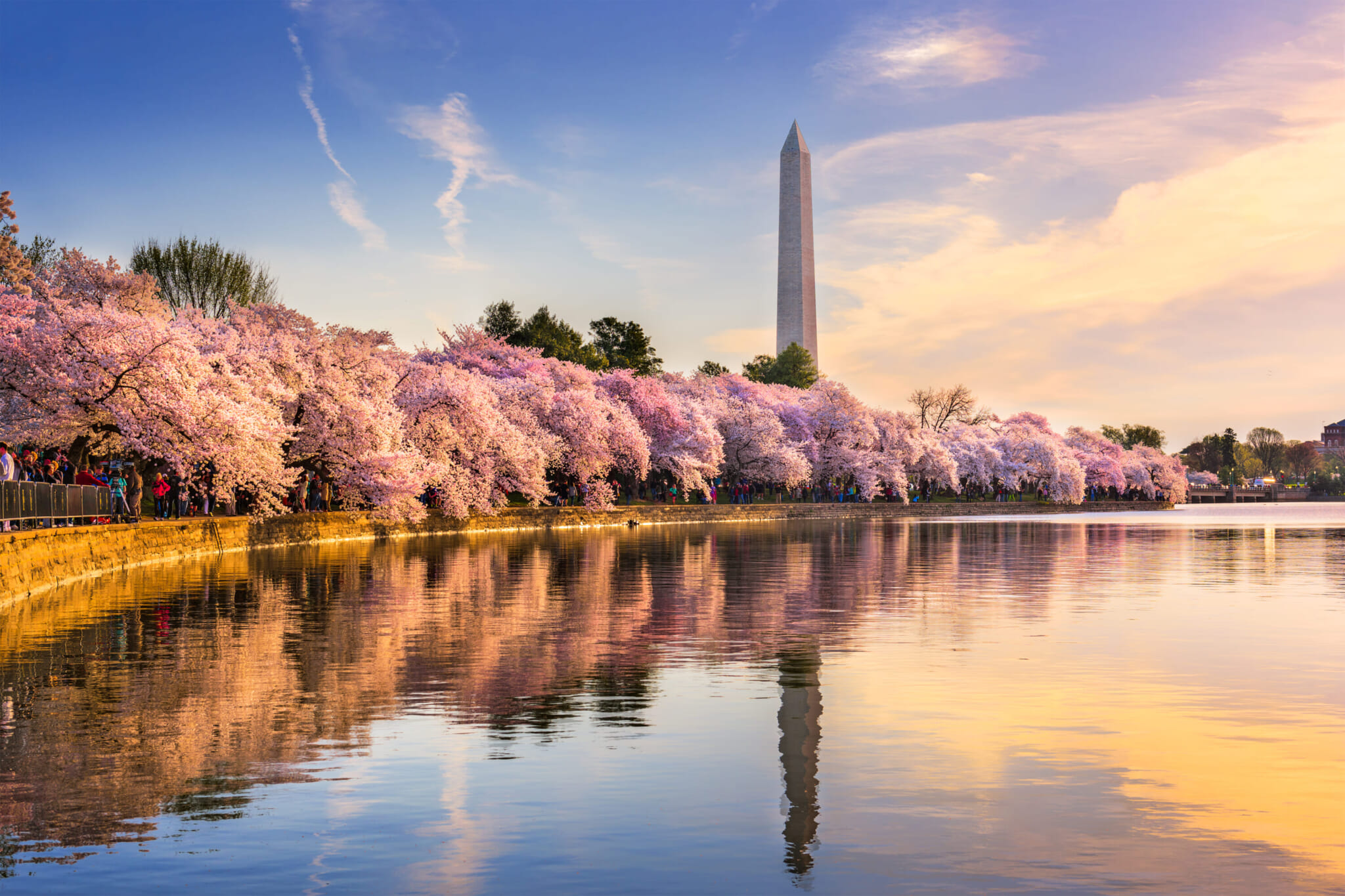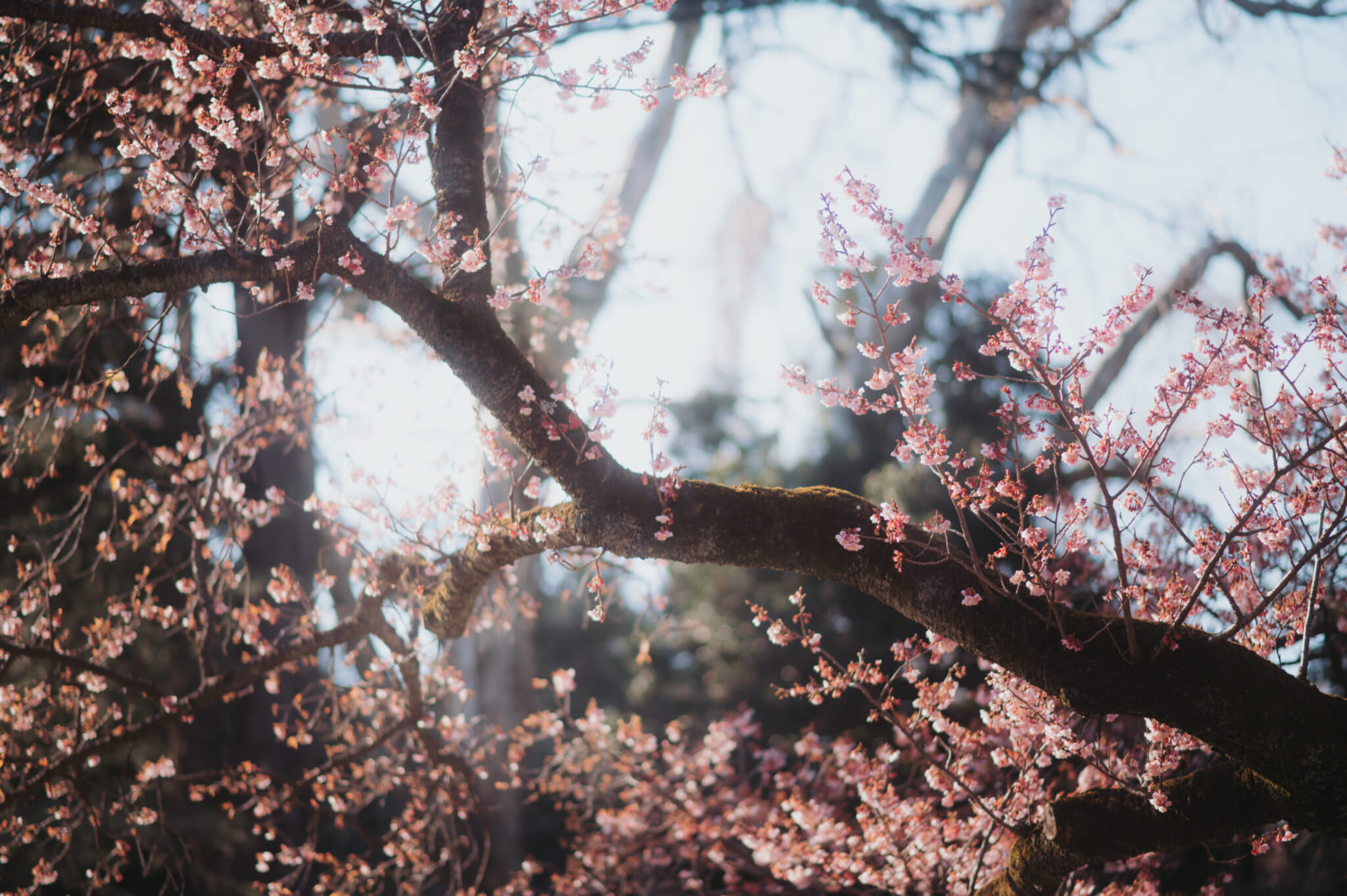A special excitement permeates the air whenever sakura season comes around. Sakura, or cherry blossoms, are a symbol of Japan and spring, drenching the landscape in a soft pink after months of the harsh whites and grays of winter. Starting in late March, people in Japan make an occasion out of appreciating the impermanent blooms by partaking in hanami, or flower-viewing, by laying out a picnic blanket and nibbling seasonal bento lunches under the fluttering petals – for adults, with an Asahi Super Dry in hand.
Paying close attention to the changes in nature and using them to mark the seasons is a core part of Japanese culture, and the tradition of appreciating sakura goes back over 1,300 years. Over the centuries, the sakura has bloomed into the symbol of Japan, coming to exemplify the philosophy of mono no aware, often translated as “the transience of things.”
Cherry blossoms are beautiful to look at, but they’re particularly prized because of their fleeting nature. With an impact on everything from mythology to global diplomacy, the sakura has a long history of being adored, enjoyed yearned for and imbued with deep meaning.

Flower of the Gods
Though the first-ever cherry blossom hanami was held in the early 9th century, the reverence for cherry blossoms much predates that. The oldest written records of sakura are found in the Kojiki, a collection of Japanese myths written in 712 CE. The legend goes that the guardian goddess of Mount Fuji, Konohana no Sakuyahime, who is said to be the embodiment of the beauty of cherry blossoms, scattered sakura seeds from the skies above Fuji, blessing the sweet earth with the fragrant blossoms.
A few decades after the Kojiki, sakura also made several appearances in the Manyoshu, Japan’s oldest collection of poems; here, too, they were closely aligned with the divine. Poem 260 depicts a scene where the mountain deity Kaguyama descends from the heavens, bringing the glories of the spring, including the sakura in full bloom.
Sakura have always been tied to mythology, a sign that the gods had descended to bless mortals with the gift of cherry blossoms for a fleeting week once a year. Even before the trend of partaking in hanami under sakura trees spread across the nation, viewing sakura was imbued with a nearly spiritual-feeling significance.

A Shift from Plum Blossoms
What few people know about hanami is that it originated as the viewing of ume, or plum blossoms, rather than sakura. Blooming for longer and earlier in the year, from February to March, the bright pink plum flower is the bolder and sturdier counterpart of the more delicate sakura. However, in the early Heian period, Emperor Saga grew so enamored with the cherry trees he encountered in Kiyomizu Temple that he held a sakura viewing party in 812 CE, with food, drinks and poetry under the pale pink blossoms. By 831 CE, hanami was common practice in the imperial palace and among the aristocratic class. The Tale of Genji, written at the start of the 11th century, depicts scenes including sakura and hanami among the aristocracy.
There is no explicit reasoning in writing behind the sudden shift from viewing ume to sakura, but it may have been politically motivated. In a piece for the New York Times magazine, Hanya Yanigahara posits that it may have had to do with Japan’s desire to distance itself from Chinese culture. A century into the Heian period (794–1185), Japan had stopped sending its convoys to learn from China’s language, religion and politics. Because China famously revered its vibrant pink plum blossoms, Yanigahara theorizes that perhaps Japan wanted to establish its own tradition of hanami, thus selecting the gentler sakura to celebrate the commencement of the spring season.

The Shogun’s Favored Flower
Throughout Japan’s feudal period, shogun threw elaborate hanami parties. Among these, Toyotomi Hideyoshi, one of the unifiers of Japan, is famous for his festivities: In 1594, he threw a series of elaborate hanami celebrations over the course of five days in Nara Prefecture.
Once the capital moved to Tokyo, Tokugawa Iemitsu and Tokugawa Yoshimune planted cherry trees in the modern-day Ueno Park and along the Sumida River, extending the sakura’s reputation: no longer a flower meant to be appreciated by the aristocracy alone, it was now accessible to the common folk. According to an article on Savvy Tokyo, it’s sometimes theorized that shogun planted cherry trees along rivers to encourage foot traffic in order to harden the soil and relieve flooding.

Hanami Across the Globe
Nowadays, the culture of hanami has spread across the globe, including to Korea, China, the U.S. and France. One of the most famous masses of cherry trees outside of Japan is found in Washington, D.C.; these trees were gifts from the mayor of Tokyo in 1912. Flowers from Japan profoundly shaped the American floral landscape — in addition to cherry blossoms, hydrangeas and azaleas now abound in parts of the U.S. But the sight of the pink blooms unfurling against the background of the Washington Monument has become a particularly iconic image, one of post-war peace and friendship between Japan and America.
This isn’t the only example of so-called “cherry blossom diplomacy,” wherein Japan bestows its iconic flowering trees on foreign countries as a sign of friendship and goodwill. In 2019, for instance, it was announced that Japan would donate 6,500 trees to London “as a symbol of bilateral friendship.” The donated sakura become an integral part of the receiving city’s landscape, sparking hanami traditions worldwide — a time at which people can take a moment and appreciate Japanese arts, culture and philosophy.
Beauty in Impermanence
Transience is what makes sakura so poignant. Sakura represent life, but they also remind us how short and fleeting it is. It is a flower that you wait all year for, graced by its glory for just a short week before it leaves you to wait another year. The beauty of sakura cannot be pressed and preserved in a book; its petals turn brown and resist attempts to capture it. The full breadth of its beauty can only be witnessed in person, after patiently waiting for when the trees decide they are ready.









